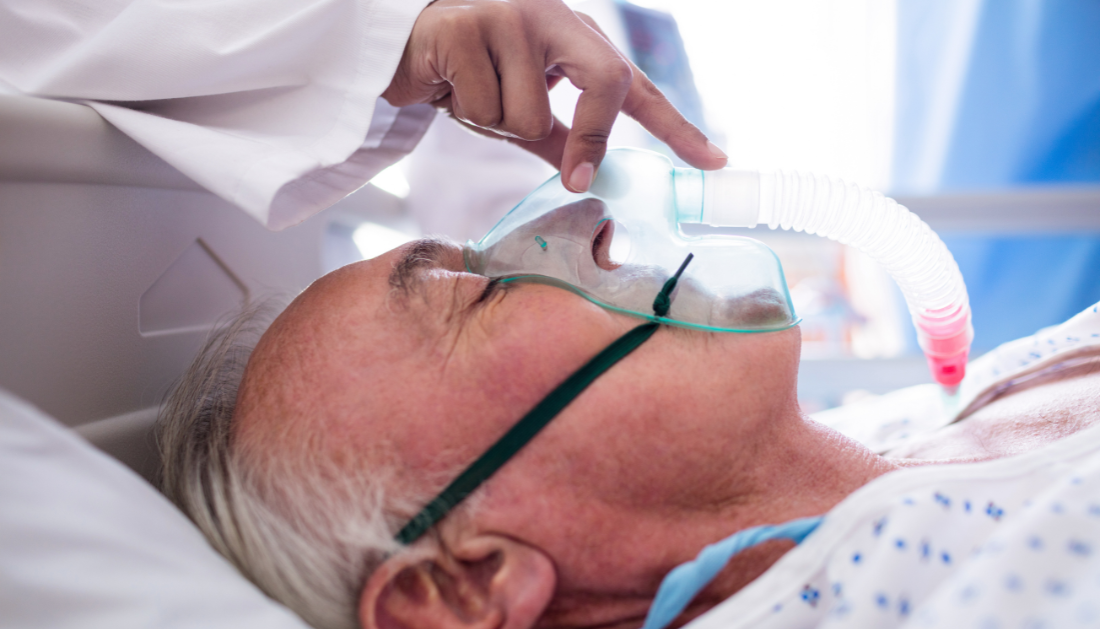

Preoxygenation via an oxygen mask is provided to the majority of severely ill people undergoing emergency tracheal intubation in current clinical treatment. Giving patients extra oxygen before an intubation process begins raises the amount of oxygen in their lungs and lowers their risk of hypoxemia, or low blood oxygen levels.
On the other hand, hypoxemia can result in cardiac arrest and death during 10% to 20% of tracheal intubations in the emergency room or intensive care unit.
Preoxygenation with noninvasive ventilation and preoxygenation with an oxygen mask are the two most popular ways to preoxygenate patients before tracheal intubation. The University of Colorado and Vanderbilt University co-led this experiment. The New England Journal of Medicine published the study.
The Pragmatic Critical Care Research Group (PCCRG) carried out the trial, known as the Pragmatic Trial Examining Oxygenation Prior to Intubation (PREOXI), in 24 emergency rooms and critical care units across the country. About 120 out of the 1,301 study participants were enrolled at the University of Colorado Health (UCHealth).
The study’s findings showed that, in comparison to the oxygen mask method, the noninvasive ventilation method, which uses a tight-fitting respiratory mask connected to a bilevel positive airway pressure (BiPAP) machine to force air into the airway at a higher pressure, significantly reduced the risk of cardiac arrest and cut the risk of hypoxemia in half.
Adit Ginde, MD, MPH, a professor of emergency medicine at the CU School of Medicine and co-senior lead investigator for the study, collaborated with the CU Center for COMBAT Medicine and Battlefield (COMBAT) Research.
“We believe the results of this study will change the way we care for our patients across the country and across the world and will lead to better outcomes for this life-saving tracheal intubation procedure,” Ginde says. “The [study] sites are very motivated to change and improve clinical care for the U.S. military, the sponsor of this research, and also for the general population.”
Noteworthy, paradigm-shifting results
Preoxygenation using noninvasive ventilation and preoxygenation using an oxygen mask were the two groups to which critically sick patients having tracheal intubation were randomly assigned throughout the research.
The purpose of the study was to determine whether preoxygenation using the noninvasive ventilation technique could stop hypoxemia from occurring during intubation.
57 of the 624 patients (9.1%) in the noninvasive ventilation group and 118 of the 637 patients (18.5%) in the oxygen mask group experienced hypoxemia out of the 1,301 patients that were quickly enrolled over a 17-month period.
Preoxygenation with noninvasive ventilation also averted cardiac arrest, which happened in one patient (0.2%) in the noninvasive ventilation group and seven patients (1.1%) in the oxygen mask group by preventing hypoxemia during tracheal intubation.
“By using BiPAP, the noninvasive ventilation method, we reduce the amount of this complication of low oxygen levels by half,” Ginde says.
“This magnitude of effect is unusual in any clinical trial, let alone a critical care trial, that you improve outcomes this significantly. An important secondary outcome is that the cardiac arrest rate was lower in the noninvasive ventilation group, too.”
Ginde is excited to begin putting suggestions and modifications into effect both locally and internationally. He is currently working on immediate revisions to military clinical practice guidelines with his colleagues at the University of Colorado and UCHealth, in collaboration with the CU Center for COMBAT Research and the United States military.
Nine authors of the study are employed at CU in the departments of medicine, anesthesiology, and emergency medicine. Ginde expects a seamless shift to a new standard of care.
“We have already started clinical implementation at our site, the UCHealth University of Colorado Hospital, as well as all the other PCCRG sites participating in the trial,” Ginde says.
“We have also started working with military operational and combatant commands and the Joint Trauma System to change policy and training guidelines.”
Ginde highlights the importance of CU’s leadership in the study, as well as its link to the armed forces, and the value of teamwork.
“This was a big team effort; the PCCRG is a highly effective group of sites and leaders in critical care trials across the country,” he says.
For more information: Noninvasive Ventilation for Preoxygenation during Emergency Intubation, The New England Journal of medicine, DOI: 10.1056/NEJMoa2313680
more recommended stories
 Gestational Diabetes Risk Identified by Blood Metabolites
Gestational Diabetes Risk Identified by Blood MetabolitesKey Takeaways (Quick Summary for Clinicians).
 Phage Therapy Study Reveals RNA-Based Infection Control
Phage Therapy Study Reveals RNA-Based Infection ControlKey Takeaways (Quick Summary) Researchers uncovered.
 Pelvic Floor Disorders: Treatable Yet Often Ignored
Pelvic Floor Disorders: Treatable Yet Often IgnoredKey Takeaways (Quick Summary) Pelvic floor.
 Urine-Based microRNA Aging Clock Predicts Biological Age
Urine-Based microRNA Aging Clock Predicts Biological AgeKey Takeaways (Quick Summary) Researchers developed.
 Circadian Control of Neutrophils in Myocardial Infarction
Circadian Control of Neutrophils in Myocardial InfarctionKey Takeaways for HCPs Neutrophil activity.
 E-Cigarette Use and Heart Attack Risk in Former Smokers
E-Cigarette Use and Heart Attack Risk in Former SmokersKey Takeaways for Clinicians and Nurses.
 36-Week Pre-eclampsia Screening May Reduce Term Risk
36-Week Pre-eclampsia Screening May Reduce Term RiskA New Preventive Strategy for Term.
 Cardiovascular Risk and Sudden Cardiac Death in Diabetes
Cardiovascular Risk and Sudden Cardiac Death in DiabetesRising Sudden Cardiac Death (SCD) Risk.
 Poor Kidney Function and Alzheimer’s Biomarkers Explained
Poor Kidney Function and Alzheimer’s Biomarkers ExplainedPoor kidney function may influence levels.
 Walking Speed Before Hip Replacement Predicts Recovery
Walking Speed Before Hip Replacement Predicts RecoveryNew Evidence Points to a Simple,.

Leave a Comment